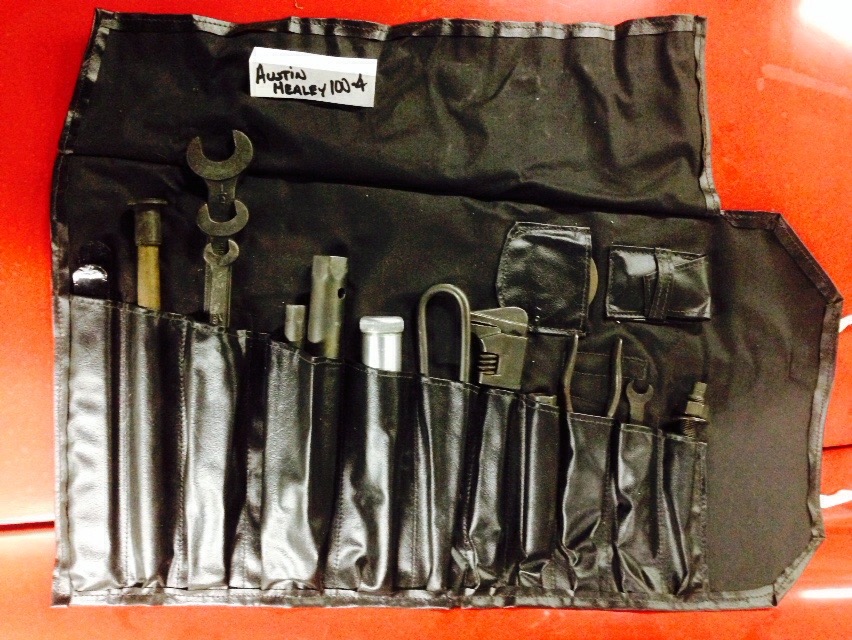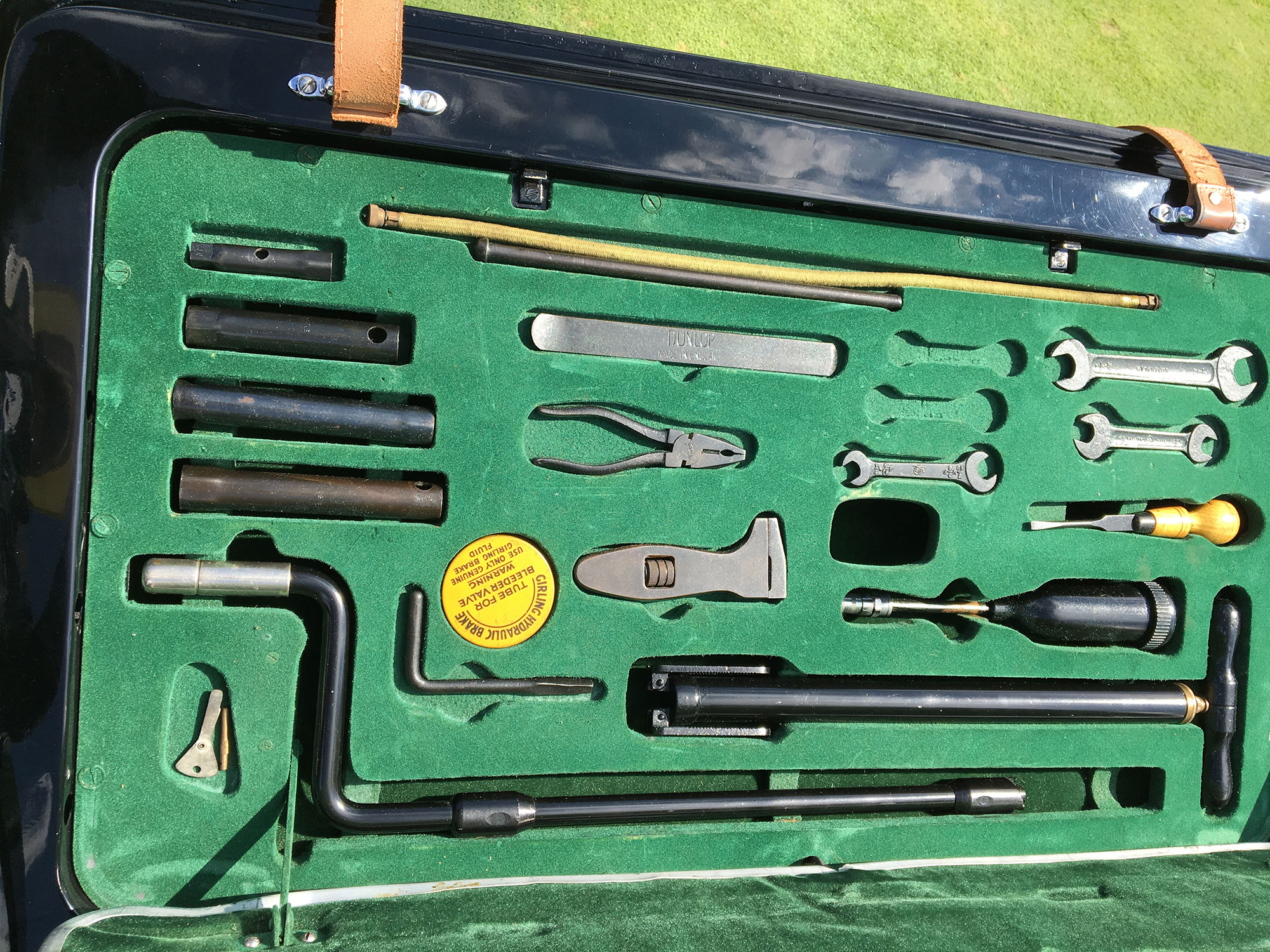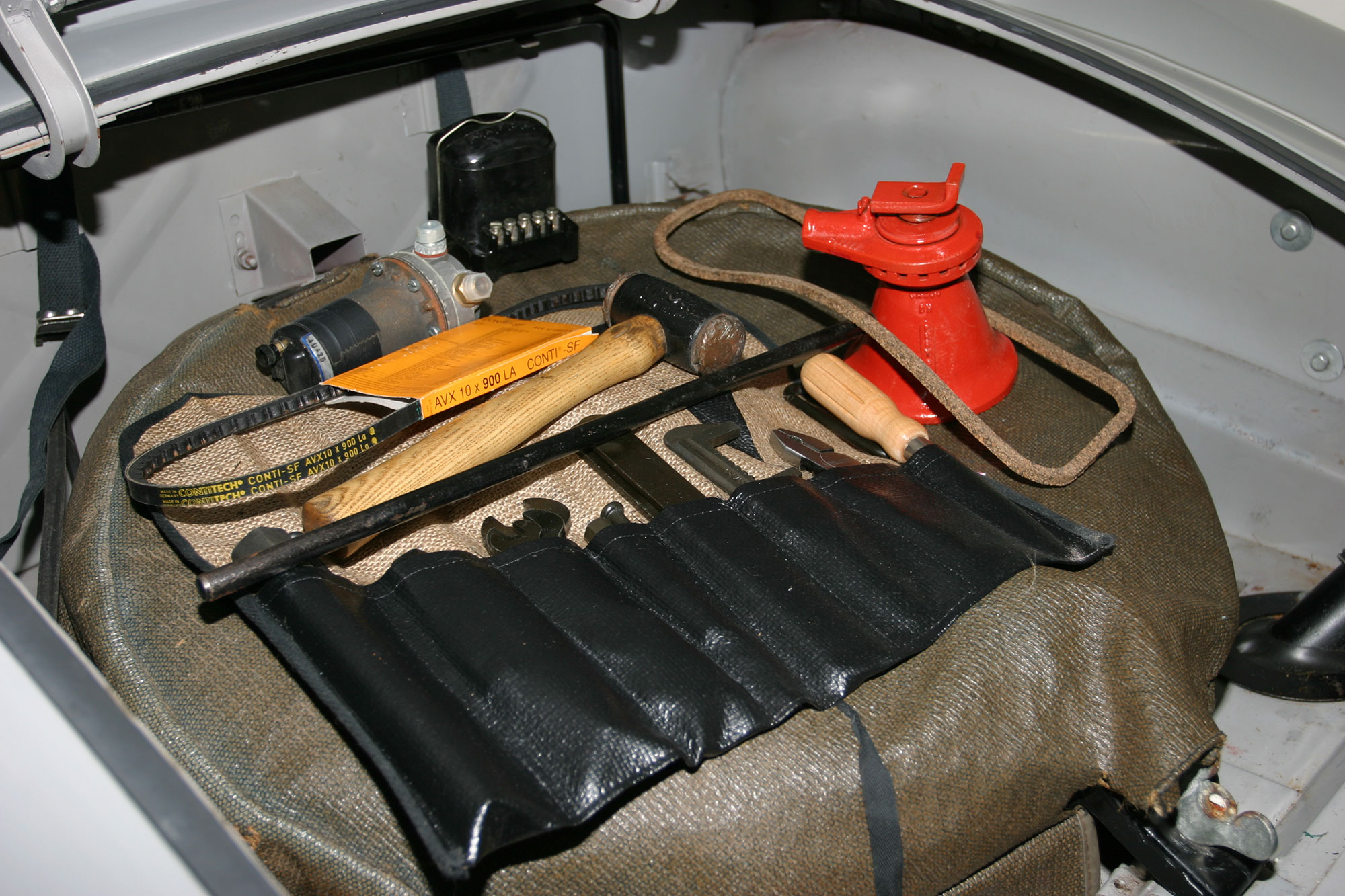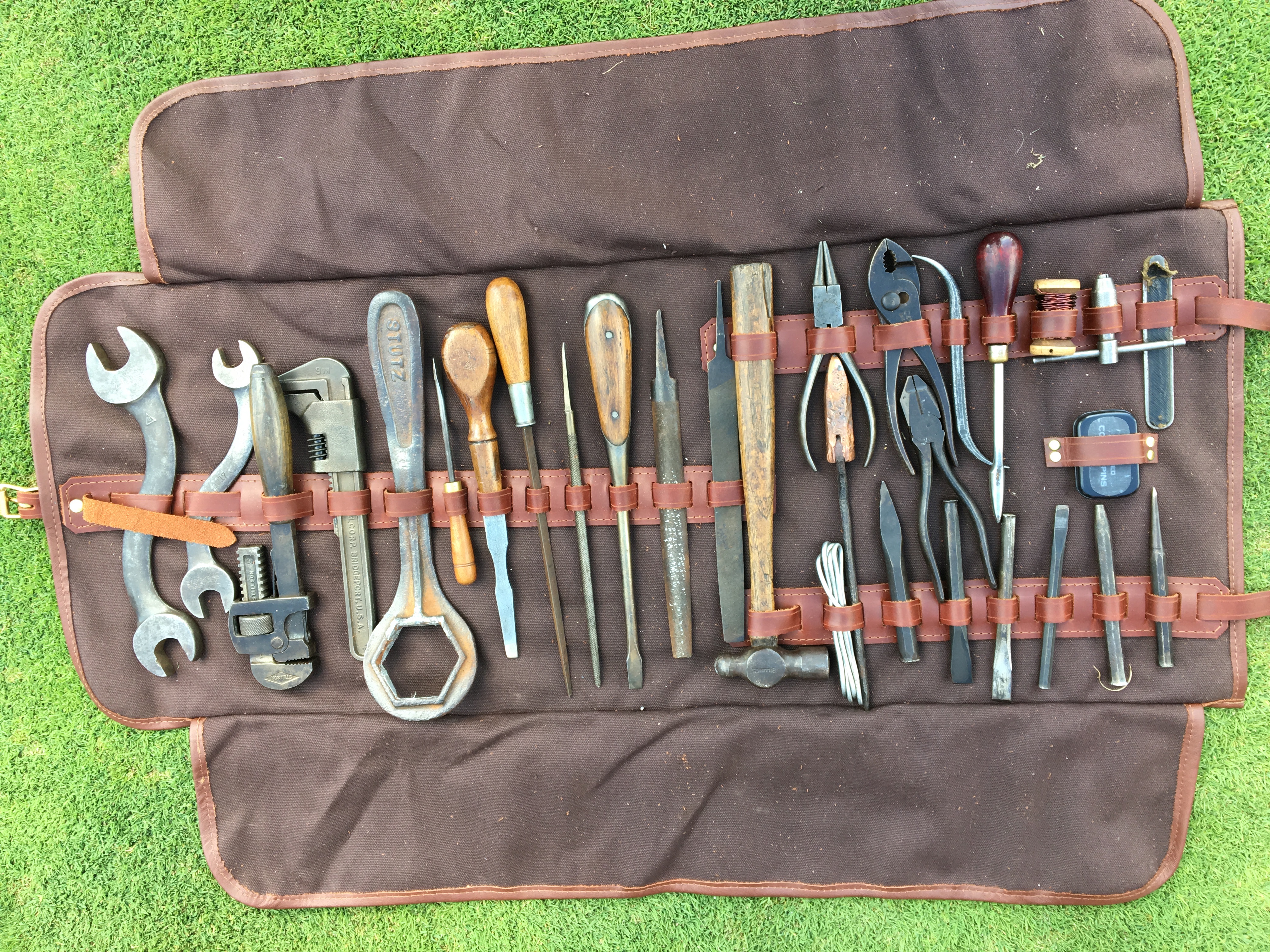Factory tool kits: The icing on the cake
A factory jack doesn’t make a car easier to work on, and original wrenches aren’t the answer for getting into tight places. That original tire pump doesn’t supply factory air, either. But that’s not the point of assembling and displaying an original tool roll. As Jerry LaBant of Liverpool Motorworks explains, “More and more people want the icing on the cake.” In other words, they want the finishing touch to a complete restoration or well-preserved original, particularly when they plan on showing a car at the highest level. And that’s a factory tool kit.
Whether a kit came with a Model A Ford, Chevrolet, or Austin-Healey, in most instances the wrenches, screwdrivers, and pliers that came with a car were originally inexpensive and meant to help the stranded motorist, not to provide an extensive set of tools. Over the years, though, tools were scattered as original owners kept them or they were used for a variety of purposes. With most British car makers, according to LaBant, the individual tools “varied according to availability, price, and how much credit the company had with a supplier.” As a result, the tool kits often had a mix of tools from Shelley, King Dick, or TW Superslim. Two “correct” kits could easily have the same basic tools, but from different suppliers.


Much of the time, expensive cars came with more extensive tool kits and, according to automotive historian and restorer Randy Ema, that was certainly true with cars such as Duesenberg, Pierce-Arrow, or Rolls-Royce. Auburns, Ema says, “had a more modest took kit in the passenger-side kick panel.” Conversely, even modestly-priced MGs, Austin-Healeys, and Triumphs came with fairly comprehensive tools that usually included several open-end wrenches and screwdrivers, a feeler gauge for setting points and spark plug gaps, knock-off hammers or lug wrenches, and even a brake bleeding kit. Whether the car was American, British, or European, by the early 1960s, factory tools became far more limited, often including only a jack and lug wrench or knock-off wrench.
In cases where the tools weren’t standard equipment, the kit could usually be supplied for less than $25. Now correct Ford-script factory tools for a Model A may cost as little as $350, while a kit for a Jaguar XK-120 costs approximately $3,500. Need a complete tool roll for an early Ferrari 250GT? Be prepared to spend $25,000–$30,000. It’s safe to say that the more exclusive the car, the more costly the tool kit. In the case of a car that has a fitted tool tray, such as certain early Jaguars and many Rolls-Royce and Bentleys, it can be very apparent when a tool is missing.
Assembling a correct tool kit can be a time-consuming exercise, even for experts like LaBant who have years of experience and specialize in certain marques. He cautions that it can sometimes take years to find all the tools, which explains why costs can be so high. It is also important to find the person or company who specializes in your marque and model to make sure you get exactly what you need.
It can often cost less to build the kit yourself by carefully picking up tools one at a time, but mistakes can be costly if you end up with the wrong model jack or grease gun. When it comes to researching what tools came from the factory, printed or online restoration guides can be invaluable. There are particularly good club-published guides for Model A and T Fords, Austin-Healeys, and Jaguars, as well as for many other marques. Additionally, commercially-published single model books are a terrific source of critical knowledge about tools. One particularly helpful article, “Proper Tools for Model A Judging,” is readily available on the Model A Club’s website, although not every club offers information as conveniently packaged.
While it’s fantastic to have a nicely restored factory tool kit, jack, and pump for display, keep them for display only. Modern tools are far better and easier to keep clean, while a small hydraulic jack is much safer should you have to change a tire while you’re on the road. It’s better to just look at the lovingly restored tools and enjoy them as you would a special hood mascot or a piece of art. Think of them as the icing on the cake.





